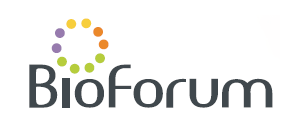Analytical Capabilities for Human Biomonitoring in Israel: State of the Art
Gal Zizelski Valenci, National Public Health Laboratory, Ministry of Health, Tel-Aviv, Israel (gal.valenci@phlta.health.gov.il)
Efrat Rorman, Department Of Laboratories, Ministry Of Health, Jerusalem, Israel
Luda Groisman, National Public Health Laboratory, Ministry Of Health, Tel-aviv, Israel
The Israeli National Human Biomonitoring (HBM) Laboratory was established in 2019 within the National Public Health Laboratory (NPHL), Ministry of Health, supported by the Environment and Health Fund.
The HBM Laboratory collaborates with Israeli HBM research groups (Academy, Hospitals, Environmental Health and Nutrient Departments of Ministry of Health), performing thousands of analytical tests and participating in their interpretation
40 exposure biomarkers have been tested using eight analytical methods adopted from scientific publications of established HBM Laboratories using the most advanced analytical technologies: GC-MS/MS, LC-MS/MS, Accurate Mass GCMS-QTOF and ICP/MS. All methods were fully validated and approved by successful participation in international proficiency tests (G-EQUAS, US CDC EQUIP).
The selection of biomarkers and human specimens, is based on the importance of the parameter in current HBM, the possibility of further monitoring of these parameters and the ability to compare the results with HBM laboratories abroad.
We will further present the analytical methods and Israeli HBM laboratory results: cotinine (passive smoking marker), metals and metalloids, pesticide metabolites and PFAS in human urine, blood, and placenta of common and/or groups of population.
As HBM is a dynamic field influenced by many global and local issues, our HBM Laboratory is looking forward for new projects, expanding analytical capabilities for testing new exposure bio-markers according to scientific interest of the HBM society.
Organized & Produced by:

POB 4043, Ness Ziona 70400, Israel
Tel.: +972-8-9313070, Fax: +972-8-9313071
Site: www.bioforum.org.il,
E-mail: hagit@bioforum.co.il